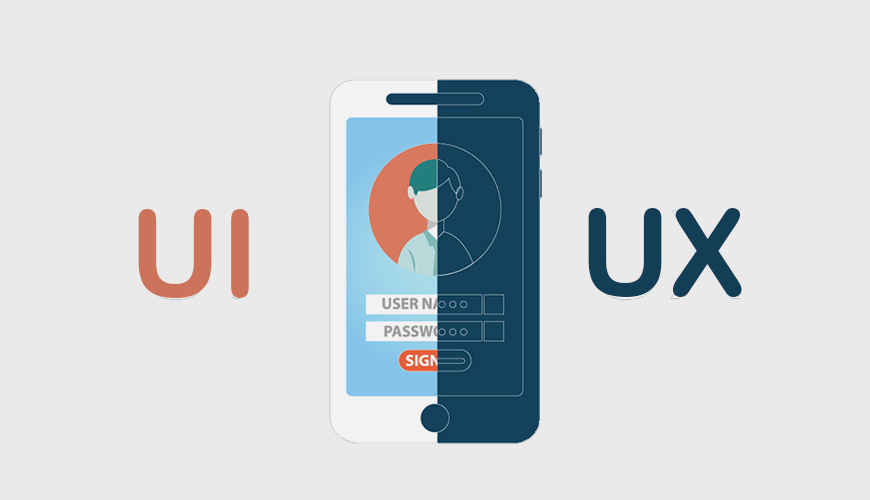Table Of Content

At the same time, consider building your social presence, showcasing your work, and getting your name out there too. Social media doesn’t just mean Instagram, there are plenty of opportunities to connect on Twitter, showcase your work, share articles, and there are some great Slack design communities out there too. Studying UX design at university or via an online course is a great way to kickstart your design career. UX design principles are things like hierarchy in information architecture, design consistency in branding, and accessibility. There’s a lot more out there, and these are your first steps into the UX world. Even if a UX designer doesn’t code themselves, they’ll be working with engineers and developers that code for them, so it’s useful to understand coding capabilities.
5 influential UX/UI trends of 2023 - Creative Bloq
5 influential UX/UI trends of 2023.
Posted: Sun, 15 Oct 2023 07:00:00 GMT [source]
User Interface Design Guidelines: 10 Rules of Thumb
UI design is more straightforward; designers create samples of the icons and controls, noting special functions like animations or tucking them away. UX design, on the other hand, is more roundabout; designers have to plan for multiple scenarios and task flows, which makes UX sketching a popular practice. At the same time, very little screen space is dedicated to less popular actions, such as changing the user preferences, which you can only do by going through your profile. One of the core UX design principles is to make common actions easy, with one or two clicks, by sacrificing less common actions, which you can hide behind other menus to conserve space. There’s also a lot to be said about the look of the interface, which also fits into UI design.
Step 7: Hand the design to development.
As with most traditional academic programs, the person teaching and providing feedback on assignments will vary from course to course. Contact hours (hours spent actually in class) range from 12 to 20 hours over 3-5 weeks per course, not including any time you’ll need to spend completing assignments outside of class. You’ll be able to pick just about any combination of qualifying courses, but you’ll need to take at least 5 courses to be eligible for the certificate (see the example course load in the next section).
Internal processes and systems

A site or application’s UX elements (e.g., client-facing messaging and feel), are built on top of its UI design (e.g., technical, aesthetic structure). Each profession’s efforts inform those of its counterpart, benefiting the overall product or service and making a lasting impression on users. For aspiring designers, understanding these distinctions are key in establishing general web development knowledge, honing applicable skills, and breaking into the UX/UI design field. From a business perspective, designing first-class user experiences is key to ensuring customer satisfaction and building brand loyalty.
The Definitive Guide
This allows UI designers to find inspiration and make sure the design elements they choose fit well with users' expectations and preferences. Research is an invaluable step of both the UX and UI design processes. For a product to be successful, both UX and UI designers need to gather as much information as possible about what users want and expect from a product. Research provides insights into user needs and desires, user behavior, design trends, and competitor strategies. This gives UX and UI designers more context, allowing them to make informed decisions and determine whether they’re moving in the right direction.
UI refers to the screens, buttons, toggles, icons, and other visual elements that you interact with when using a website, app, or other electronic device. The first step to create UX content is to conduct user research and gain a deep understanding of your target audience’s needs, goals, pain points, behavior patterns, and preferences. This can involve methods such as surveys, interviews, user testing, analytics data analysis, and contextual inquiry. While there is no single “best” degree for UX design, many professionals in the field have backgrounds in design, psychology, computer science, or related fields.
key UI design considerations
The animation, the icon, and the text are all part of the visual design. The UI designer ensures they all work together and add to the positive user experience. Both are essential for a product to succeed—if you've got a website with an attractive interface, but it’s hard to use and navigate (a bad user experience), the website won't succeed.
Finally, we’ll discuss options for getting started, even if you don’t have a degree or previous experience. You also have to ensure that your content is accessible to users with varying abilities and can be easily localized or translated for different regions and languages. You this you must know what your user demographics are and design the content according to that. You also have to collaborate with subject matter experts, writers, and editors to ensure accuracy and quality. Typically, non-accredited programs can also be completed more quickly and cost significantly less money than their accredited cousins.
UI designers are hands-on when it comes to design, so the majority of their toolbox needs to consist of design tools they know well and trust. Realistically, the UI designer could run A/B tests over the entire life of a website. They’re not just useful for ironing out visual design issues but also for improving the overall look and feel of the website. A style guide is a must regardless of what type of website you build.
UI, on the other hand, specifically concerns the product's visual and interactive elements, like buttons, icons, spacing, and color schemes. UX design involves extensive research to understand user needs, behaviors, and the journey they undertake while using the product. This research guides the design to ensure it solves real problems and enhances the user's experience. If you’re looking at job boards or open job listings for designers, you’ll see lots of skills for UI and UX designers alike. This is usually because the hiring managers don’t understand that these can be two different roles.
While user interface designers are primarily responsible for the look of a product, they don’t ignore user experience. Many common design patterns are based on creating effective user experiences. These patterns are meant to engage users in particular ways, to make interactions more intuitive, and to generally make digital products easier to use. There's often a misconception that UI design is virtually the same as graphic design.
This style should visually communicate the intended message and appeal to the target audience. Then, create a style guide that will document these choices to maintain consistency throughout the design process. UX tends to focus on the overarching end-to-end experience that matches a company’s goals and strategy. So, critical thinking and problem solving skills come into play nearly everyday. UI designers look more at the fine print of how a specific color palette may be more appealing to the eyes or how an experience may be responsive and change from mobile to laptop to desktop devices. If you’re interested in visual design, interaction design, user-centered design, graphic design then you should consider for UX Design.
UI design involves the look of a product — namely, the visual components and interactive elements that contribute to a strong user experience. Meanwhile, UX design focuses on the overarching feel of the product or service and the components that will lead to a meaningful, relevant experience for users. People sometimes confuse the two, but UI is actually a specialized subset of UX. According to Figma Designer Advocate Hugo Raymond, engaging UI lays the foundation for a positive overall user experience with a digital product or website. "Effective user interface design brings together usability and interactive design to build an emotive connection between users and products," he explains. This book helps designers transition from a traditional waterfall approach to an agile project workflow.

No comments:
Post a Comment